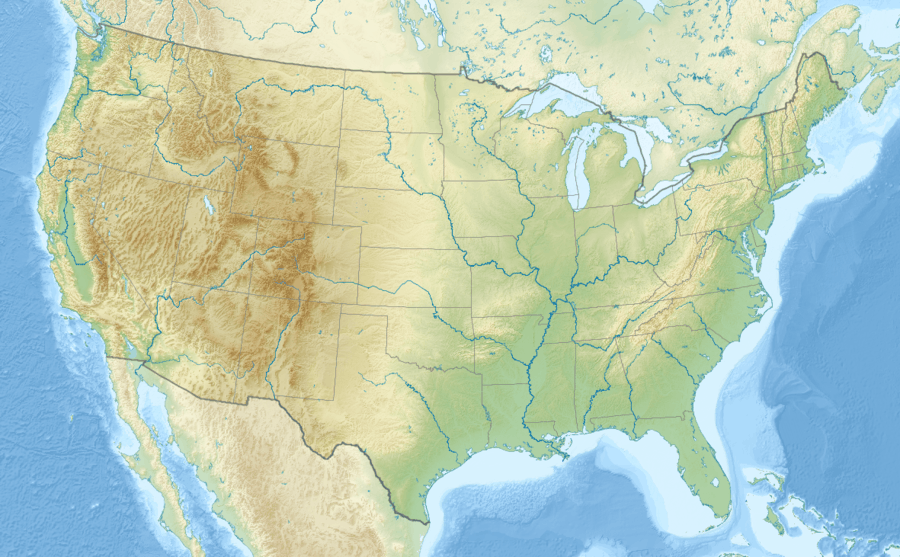Big Muddy National Fish and Wildlife Refuge
| Big Muddy National Fish and Wildlife Refuge | |
|---|---|
|
IUCN category IV (habitat/species management area) | |
 Map of the United States | |
| Location | Missouri River, Missouri, United States |
| Nearest city | Jefferson City, Missouri |
| Coordinates | 38°38′00″N 91°47′00″W / 38.6333°N 91.7833°WCoordinates: 38°38′00″N 91°47′00″W / 38.6333°N 91.7833°W |
| Area | 16,700 acres (68 km2) |
| Established | 1994 |
| Governing body | U.S. Fish and Wildlife Service |
| Website | Big Muddy National Fish and Wildlife Refuge |
The Big Muddy National Fish and Wildlife Refuge was established in 1994, and has grown to over 16,700 acres (68 km2). Like pearls on a string, these acres are spread out as individual units along the Missouri River between Kansas City and St. Louis. These pearls of habitat benefit floodplain-dependent fish and wildlife species. The Big Muddy Refuge is planning to grow to 60,000 acres (240 km2) by buying land from willing sellers who want to see their properties set aside for the benefit of wildlife and the enjoyment of all.
The pre-development Missouri River as documented by Lewis and Clark was considerably different from today's river. The historic Missouri was a broad, slow-moving, shallow river with braided channels. These past river conditions created a haven for wildlife, which included vast floodplain forests of giant trees, marshes, and even wet prairies. Today's river is channelized. It is deeper and faster, and controlled by levees, dikes, and other containment structures. These controls make the river more navigable and the surrounding floodplain ideal for agriculture.
The Big Muddy Refuge is allowing the Missouri River to be a river again, to enter its floodplain. This occurs during minor flood events. Management has created side channels, cut down levees, and allowed the floodplain vegetation to return. Currently, in many places the refuge is an impenetrable thicket of young trees and vegetation, but, as the trees grow and the refuge matures, its appearance will change. The process may take decades or even centuries.
References
![]() This article incorporates public domain material from websites or documents of the United States Fish and Wildlife Service.
This article incorporates public domain material from websites or documents of the United States Fish and Wildlife Service.